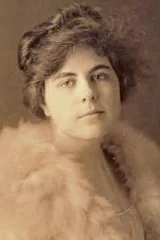
By Brent Engel, contributing writer
She already was known across America, but custom required a more proper introduction. Nineteen-year-old Pike County native Genevieve Clark made her January 1914 societal debut in Washington, D.C. The fete featured many adornments typical of such affairs. But as she would often do over the next six decades, the spirited daughter of the third most powerful man in the land would flex her irrepressible will. It wasn’t as if Champ Clark and his wife, also named Genevieve, didn’t have anything else to do. The Speaker of the House of Representatives would soon be dealing with more federal anti-trust protections for consumers. Mrs. Clark was preparing for a convention of the Women’s National Democratic League, which she had helped organize.
Other matters were getting attention. Europe was on the brink of a war that would eventually draw in the United States. The first commercial passenger airline flight took place in Florida, covering the 18-mile route in 23 minutes. And the World Baseball Tour featuring games in 44 cities across the globe was under way, with the St. Louis Cardinals providing catcher Ivey Wingo and slugger Leopold Christopher Hoernschemeyer – who auspiciously went by the name Lee Magee – to the roster. Despite all that was going on, the Clarks gladly opened their home at 2401 Massachusetts Avenue NW to enthusiastic guests. The event was the talk of the town.
The Clarks “revived all the old-time glory of the function, besides letting this generation see what the two words meant a score or two of years ago,” The Washington Evening Star glowingly wrote. Genevieve wore a fashionable pink chiffon gown and her mother was decked out in a white satin dress. Champ presumably wore a suit, but since he wasn’t the center of attention for a change, the newspapers didn’t bother with a description.
“The house was profusely decorated with pink roses, and the flowers sent Miss Clark added hundreds of lovely blossoms,” the Evening Star noted.
Women such as Millicent Hearst, wife of newspaper magnate William Randolph Hearst, helped greet visitors. Genevieve’s prominent young guests included Madeleine Edison, daughter of inventor Thomas Edison; Laura Graves, whose father, John, had run for vice president; and Helen Cox, daughter of Ohio Gov. James Cox. A steadfast disposition helped Genevieve attract friends who had an equally strong mindset. Among them were Dorothy Harvey, daughter of New York entrepreneur George Harvey, and Marie Peary, whose father, Robert, was credited as being the first man to reach the North Pole. The assembly of young debutantes “made a most pretty picture,” the Washington Herald observed.
The newspapers knew Genevieve well. She had dramatically campaigned for her father at the 1912 Democratic National Convention, where Champ came within an eyelash of being nominated for president. In 1913, the media darling became a reporter herself. The temperance and women’s voting rights advocate traveled extensively and got involved in many political efforts, even though she wouldn’t legally be able to cast a ballot for a few more years. Genevieve put her foot down on more than one occasion, and the societal debut was one of them. She insisted that before stepping out with Washington’s aristocrats, she would do something for those in need. So, Genevieve spent the morning helping with a linen drive at a local mission.
Eleven months later, the Clarks would announce Genevieve’s engagement to New Orleans newspaper publisher James Thomson, whom she had met at the 1912 convention. The nuptials took place at the Clark home in Bowling Green on June 30, 1915. Genevieve ran unsuccessfully for Congress in 1924. She died at 86 on Feb. 16, 1981, and is buried in Virginia.